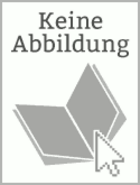Detailansicht

Oxide Scale Behaviour in High Temperature Metal Processing
ISBN/EAN: 9783527325184
Umbreit-Nr.: 963728
Sprache:
Englisch
Umfang: X, 376 S., 291 s/w Illustr., 36 farbige Illustr.,
Format in cm:
Einband:
gebundenes Buch
Erschienen am 22.04.2010
Auflage: 1/2010
- Zusatztext
- The result of a fruitful, on-going collaboration between academia and industry, this book reviews recent advances in research on oxide scale behavior in high-temperature forming processes. Presenting novel, previously neglected approaches, the authors emphasize the pivotal role of reproducible experiments to elucidate the oxide scale properties and develop quantitative models with predictive accuracy. Each chapter consists of a detailed, systematic examination of different aspects of oxide scale formation with immediate impact for researchers and developers in industry. The clear and stringent style of presentation makes this monograph both coherent and easily readable.
- Kurztext
- The result of a fruitful, on-going collaboration between academia and industry, this book reviews recent advances in research on oxide scale behavior in high-temperature forming processes. Presenting novel, previously neglected approaches, the authors emphasize the pivotal role of reproducible experiments to elucidate the oxide scale properties and develop quantitative models with predictive accuracy. Each chapter consists of a detailed, systematic examination of different aspects of oxide scale formation with immediate impact for researchers and developers in industry. The clear and stringent style of presentation makes this monograph both coherent and easily readable.
- Autorenportrait
- InhaltsangabePreface INTRODUCTION A PIVOTAL ROLE OF SECONDARY OXIDE SCALE DURING HOT ROLLING AND FOR SUBSEQUENT PRODUCT QUALITY Friction Heat Transfer Thermal Evolution in Hot Rolling Secondary Scale-Related Defects SCALE GROWTH AND FORMATION OF SUBSURFACE LAYERS HighTemperature Oxidation of Steel ShortTime Oxidation of Steel Scale Growth at Continuous Cooling Plastic Deformation of Oxide Scales Formation and Structure of the Subsurface Layer in Aluminum Rolling METHODOLOGY APPLIED FOR NUMERICAL CHARACTERIZATION OF OXDIE SCALE IN THERMOMECHANICAL PROCESSING Combination of Experiments and Computer Modeling: A Key for Scale Charaterization Prediction of Mild Steel Oxide Failure at Entry Into the Roll Gap as an Example of the Numerical Characterization of the Secondary Scale Behavior MAKING MEASUREMENTS OF OXIDE SCALE BEHAVIOR UNDER HOT WORKING CONDITIONS Laboratory Rolling Experiments Multipass Laboratory Rolling Testing Hot Tensile Testing Hot Plane Strain Compression Testing Hot FourPoint Bend Testing Hot Tension Compression Testing Bend Testing at the Room Temperature NUMERICAL INTERPRETATION OF TEST RESULTS: A WAY TOWARD DETERMINING THE MOST CRITICAL PARAMETERS OF OXIDE SCALE BEHAVIOR Numerical Interpretation of Modified Hot Tensile Testing Numerical Interpretation of Plain Strain Compression Testing Numerical Interpretation of Hot Four-Point Bend Testing Numerical Interpretation of Hot Tension-Compression Testing Numerical Interpretation of Bend Testing at Room Temperature PHYSICALLY BASED FINITE ELEMENT MODEL OF THE OXIDE SCALE: ASSUMPTIONS, NUMERICAL TECHNIQUES, EXAMPLES OF PREDICTION Multilevel Analysis Fracture, Ductile Behavior, and Sliding Delamination, Multilayer Scale, Scale on Roll, and Multipass Rolling Combined Discrete/Finite Element Approach UNDERSTANDING AND PREDICTING MICROEVENTS RELATED TO SCALE BEHAVIOR AND FORMATION OF SUBSURFACE LAYERS Surface Scale Evolution in the Hot Rolling of Steel Crack Development in Steel Oxide Scale Under Hot Compression Oxide Scale Behavior and Composition Effects Surface Finish in the Hot Rolling of Low-Carbon Steel Analysis of Mechanical Descaling: Low-Carbon and Stainless Steel Evaluation of Interfacial Heat Transfer During Hot Steel Rolling Assuming Scale Failure Effects Scale Surface Roughness in Hot Rolling Formation of Stock Surface and Subsurface Layers in Breakdown Rolling of Aluminum Alloys OXIDE SCALE AND THROUGH-PROCESS CHARACTERIZATION OF FRICTIONAL CONDITIONS FOR THE HOT ROLLING OF STEEL: INDUSTRIAL INPUT Background Brief Summary of the Main Friction Laws Used in Industry Industrial Conditions Including Descaling Recent Developments in Friction Models Application of Hot Lubrication Laboratory and Industrial Measurements and Validation Industrial Validation and Measurements Conclusions and Way Forward